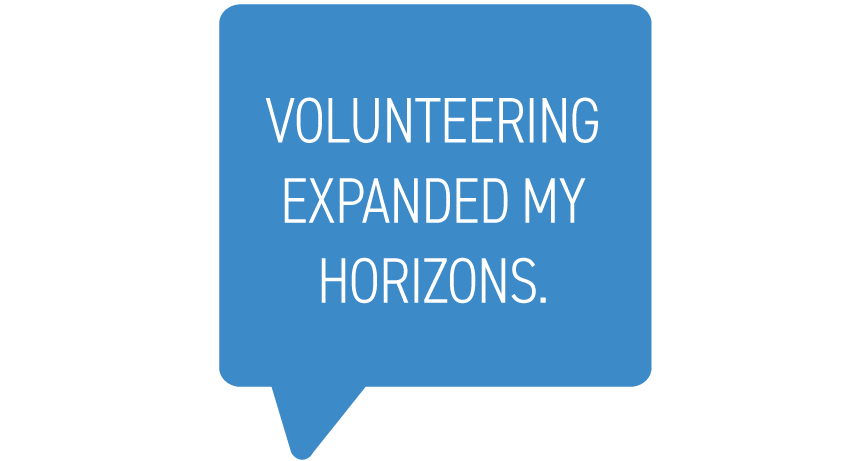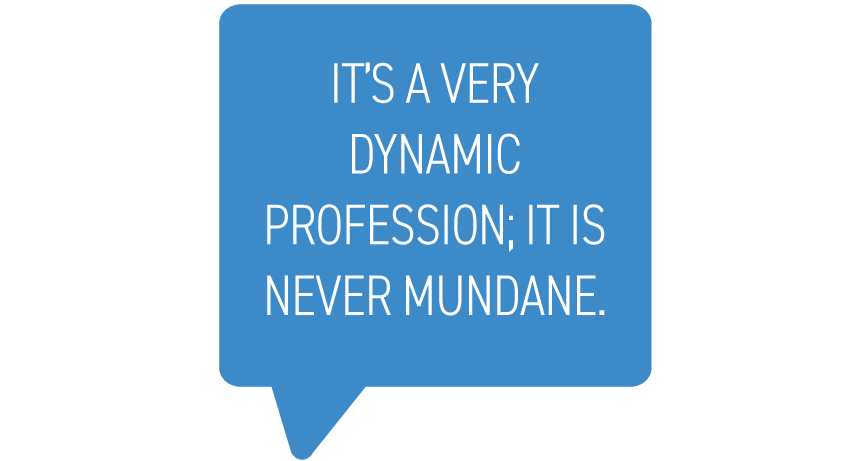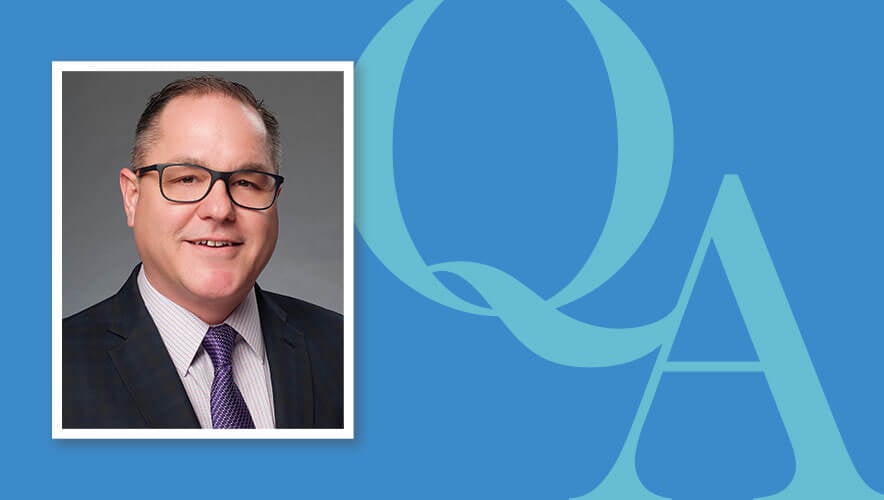Accelerating Change: An Interview with John Petruzzi, Jr., CPP
Security’s never boring, says John Petruzzi, Jr., CPP, and the rapidly evolving and overlapping crises of 2020 made that more apparent than ever. Before he begins his term as the 2021 President of the ASIS International Global Board of Directors, Petruzzi shares his goals, how he sees the association evolving, career advice, and lessons from 2020.
Petruzzi began his career in the U.S. Marine Corps, but a chance meeting with a friend turned his attention to a post-military career in private security. While his previous perception of the field was centered on security guarding and cloak-and-dagger protective details, his immersion in the investigative, business resilience, executive protection, and physical security elements of corporate security hooked him for life.
Currently Petruzzi is executive vice president for the northeast and head of integrated security solutions for G4S Americas, and for decades—from roles in corporate security to security services firms—volunteering has been a constant part of his career, from the chapter level to council leadership to the ASIS Foundation Board of Trustees, and now, the ASIS International Global Board.
This interview has been edited and condensed for clarity.
Given your long trail of volunteering from the chapter to the board, what have you learned at all those different levels?
JP. Volunteering expanded my horizons. I chose to move on from companies that I was in because I wanted to expand my knowledge. I also was able to leverage my network through ASIS to move from the financial services industry as a corporate security professional into critical infrastructure or utilities—vastly different worlds.
I could tap into resources that I knew to say, “Hey what’s security like within the utility sector? I may be interested in making that leap over there. What should I be thinking about? What are the some of the concerns? What are some of the value propositions that you can create in that environment?”

Yes, the principles of security are always the same, but some environments are more highly regulated than others, some are more compartmentalized than others, some have more matrix relationships versus direct relationships. As an active volunteer, there’s an ability to tap into security leadership and say, “Hey, I’ve never managed in a matrix relationship. How does that work?”
I was also able to share my own successes and pioneering projects with CSO Center members and peers so a framework I built could be adapted elsewhere. It can’t be one way; I can’t just consume all the time. I have to provide information back, and I still do that today.
How do you see recent changes at ASIS broadening the network and knowledge base for security professionals?
JP. For me, it’s a fundamental shift that’s happened at ASIS—that migration to communities. We used to have these closed councils, but now communities are open for anyone to join and learn about different sectors or areas from experts in the field. That’s huge.
The second piece is all around our global governance. ASIS made a significant investment in engaging outside association management companies that understood best practices. It was 60 years since we retooled the organization. Migrating to communities was a piece of that, but so was understanding that we’re no longer running the world of security from Virginia.
We need to think and act strategically from a global perspective, but we also need to have that local touch and that ability to connect at a regional or local level. Moving to a global board and, in 2022, seating the North American and European boards are the real first steps of this.
Given the vast number of events globally in 2020—the COVID-19 pandemic, civil unrest, lockdowns, supply chain disruptions, and remote work, to name a few—how has the security industry been affected?
JP. There are two things that move the business of security: security incidents and regulation. There are always security incidents whether they are man-made (political unrest, civil unrest, any upticks in theft, or compromising of supply chains) or natural disasters. When they layer up, it gets more complicated.
In 2020, we had one of the most active storm seasons in North America that anybody can ever imagine. Think about the geography where you have folks who are coping with their fourth, fifth, or sixth hurricane of the year. That impacts everyone. That is a security incident. You’re still dealing with remote workers, you’re still dealing with supply chains, and we’ve all had to pivot and adapt. At the same time, those security incidents are just layered on top of the fact that now you’ve got to create safe work environments for critical and essential workers who have to be on site.
The role of a security professional hasn’t been radically altered, but it has accelerated and been elevated in status.
What lessons did you learn in 2020, and how are they informing your goals as ASIS president in 2021?
JP. You have to be willing to adapt. We also need to think about things that made sense when we were in a place where there was much more physical, interpersonal interaction—but don’t work today. We have some great traditions at ASIS. You think about our President’s Reception at Global Security Exchange (GSX), you think about our in-person global events and the ability to recognize and honor security professionals. You just can’t replicate some of that in the virtual space.
We just need to pivot and know that when we’re in a time and place when it’s safe for everyone to be back together in person, we’ll get back to some of those traditions. At the same point, let’s learn from what we have done really well and use that to inform how we tackle 2021 and beyond.
By leveraging virtual environments for meetings, engagement, education, and communication, ASIS has accelerated not only the volume but the quality of information that we’re pushing out as an association. Those are all great things, and they will not go away when we get back to whatever that new normal is going to be. We’ve enhanced ourselves now.
There are three priorities for me in 2021 that I’m looking for in the association’s strategy, and it just goes back to the point of accelerating some of our existing goals. We’ve had digital transformation on our strategic priorities for the last few years; now we’re taking that and flooring the accelerator continuing that digital transformation.

For global governance, we had to pause briefly because of COVID-19, but there are things that we can do locally once we stand up these regional boards and we have more structure, process, and procedure. I believe we can act more nimbly than before because now we have a governance body that can tap into headquarters as necessary and we have created a culture of responsiveness by volunteers and staff.
The third is all about our global content and pursuing that both virtually and on-demand. It is absolutely huge that we’ve been able to do what we’ve done, whether it’s GSX+ or the various certificate programs we’re getting ready to launch.
The gap that we’re trying to plug in 2021 is on-demand learning—the ability for someone to go into the various buckets of disciplines—physical security, investigations, business continuity and resilience, executive protection, information security—and literally have a 100-level course through a 400-level course, depending on how much you need to learn about a certain topic for your role and goals. We can build that repository of education sessions and have on-demand learning for our members. It’s also a way for us to attract nonmembers to ASIS.
How do you see the role of security departments and professionals changing?
JP. It’s really cool; for the last decade as an association we’ve been very much about moving the industry and the profession as a whole to a risk-based approach.
Really, the construct of enterprise security risk management (ESRM) is all about those relationships. It’s all about building relationships prior to any of these pandemics, natural disasters, or incidents. I think what we’ve seen is an acceleration of that.
The organizations that I’ve seen that have responded most effectively had already adopted the ESRM approach. They knew who their health and safety individuals were. They knew who managed the supply chain. They knew the critical elements of their business. Who were essential workers? Who were not? They had a leg up. The organizations that were siloed and security managed just security and the relationships were just very narrow—they have had a very difficult time through this pandemic.
What makes you most optimistic about the future of security?
JP. I’ve always been optimistic about security because as a profession, it’s never going away. It’s only going to adapt to the changing environments that we live in. The skills and experience needed will broaden—I do not ever see us being in a place where we were decades ago, with this siloed approach of just physical security professionals, or just investigators, or just information security professionals, or just continuity and resiliency professionals. The consolidation of those responsibilities is not going away.
The approach to publicly traded business will always be to do more with less, better and faster. Whether you’re a supervisor, a manager, a director, a VP, a CSO, or if you’re on the industry side as I am now and you’re running a group of security professionals that deliver various services, you always keep that in the back of your mind. Is there an opportunity for me to operate more efficiently? That’s what’s exciting to me.
The threats and the risks will change. We’ll be able to reduce exposure on some of them. In some cases, we may be able to completely eliminate them, but tomorrow, there’s a whole new set of threats out there. It’s a very dynamic profession; it is never mundane. You’re never sitting back going, “Oh, it’s just another day in the security office.”
Claire Meyer is managing editor of Security Management. Connect with her on LinkedIn or email her at [email protected].
